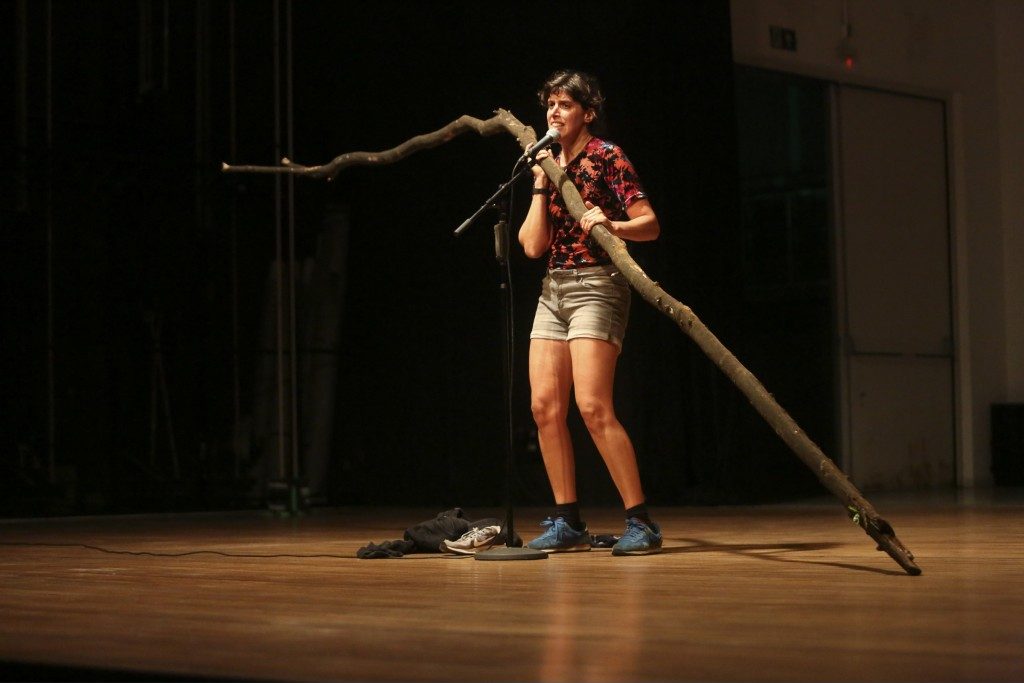o que fazer daqui para trás (What to do from here on backwards)
Concept and Direction: João Fiadeiro
Performers and co-authors: Adaline Anobile, Carolina Campos, Márcia Lança, Iván Haidar, Julian Pacomio and Daniel Pizamiglio.
Direction Assistants: Carolina Campos and Daniel Pizamiglio
Light Design: Colin Legras
Technical Direction: Leticia Skrycky
Co-production: Teatro Maria Matos (Lisbon) / Teatro Rivoli (Porto)
Support for international tour: Gulbenkian Foundation and GDA Foundation
Institutional support: Lisbon City Hall
Artistic Residencies: Arquipélago (Azores), Santarcangelo Dei Teatri (Italy) and Atelier Real (Lisbon)
Premiere: Teatro Maria Matos (Lisbon), November 11th, 2015

Photo by Guto Moniz
Time present and time past
Are both perhaps present in time future
And time future contained in time past.
If all time is eternally present
All time is unredeemable.
T. S. Eliot
//
In O que fazer daqui para trás (What to do from here on backwards), Fiadeiro continues to explore time – as duration, as suspension, as interval – while focusing his attention on what remains, what was left behind, what was forgotten. What “remains” produces “absence”, the proof of a presence. It is here, in this absence, that we find clues that provide us with the necessary tools for the impossible task of re-building the world, once and again. A permanent flight towards things that are not yet, towards things that might be(come).
The dispositive of this work is very simple: the performers run around a theater until they are exhausted and in this condition return to a bare stage – which holds at the center a lonely microphone – to share with the audience an experience they had outside (something they saw, felt, imagined). Each performer talks about their experiences (navigating in-between factual, fictionalized and poetically content) while struggling with a wheezing breath that prevents them from coherently articulating words and thoughts.
For this dispositive to work the body needs to be on the edge of collapse but it can’t actually collapse. The body needs to be exhausted but not tired. As Deleuze puts it: “the tired has only exhausted realization, while the exhausted exhausts all of the possible” (The Exhausted, Gilles Deleuze, University of Wisconsin Press). The dispositive needs exhausted performers because it needs them to perform “that which is not realized through the possible”.
What remains unsaid is more important than what is said. Absence overlaps presence. Drama doesn’t come from the theater but from what bodies can (and have, and bring). The periphery is the protagonist: shadows indicate the presence of light, silence reminds us of the presence of sound, and absence doesn’t let us forget the presence of life.
Shadow, silence and absence are – for those who ask – what this work is all about.

Photo by Patricia Almeida
Teaser
Excerpt
Full work (activate Closed Captioning for English)